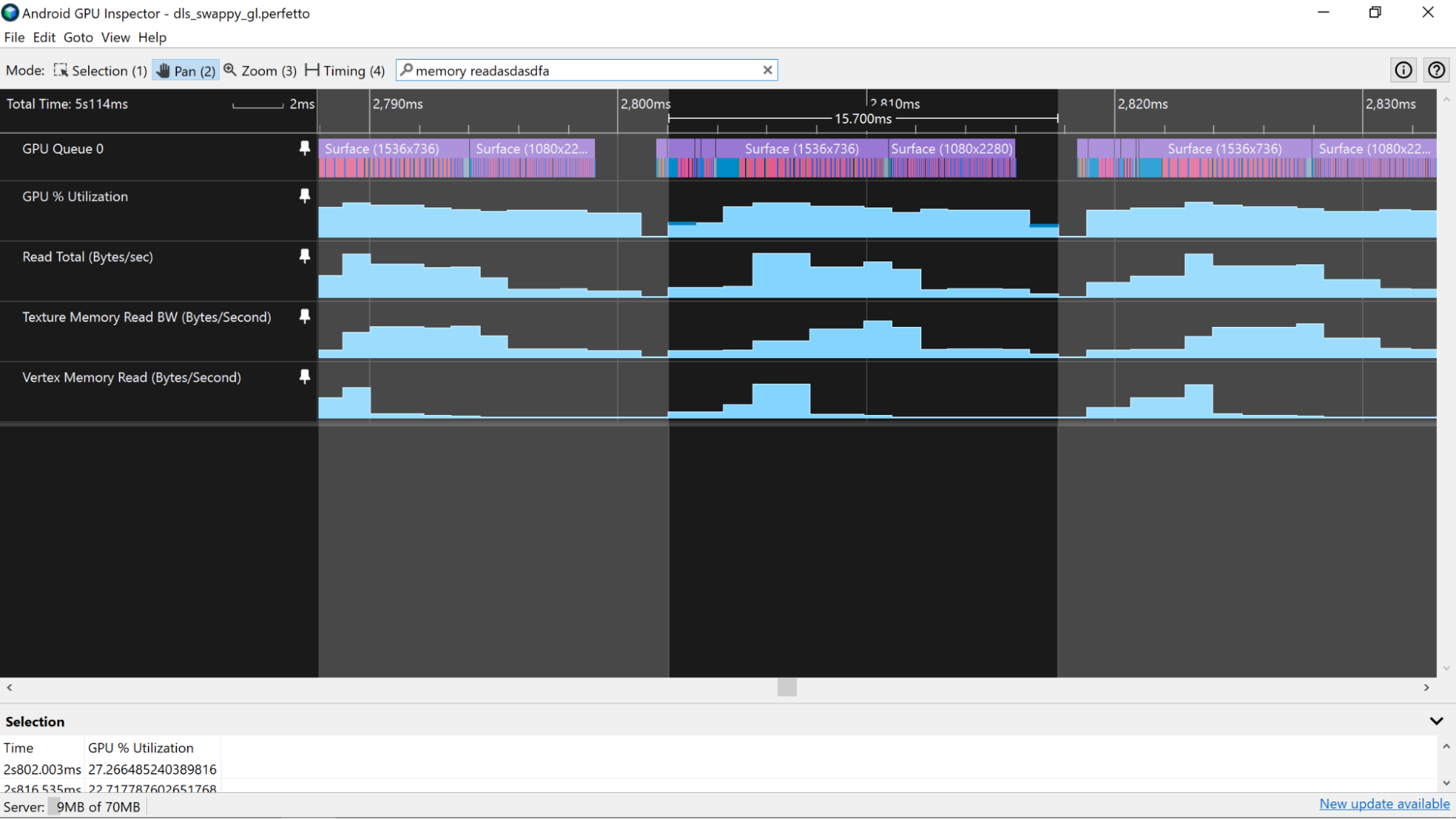앱의 메모리 사용 특성은 앱 성능의 기본적인 측면입니다. 시스템 프로파일러를 사용하면 사용 가능한 GPU 카운터 정보를 보고 이러한 특성을 분석할 수 있습니다.
Adreno 기기
Adreno 기기에서는 먼저 CPU 및 GPU 프레임 처리 시간 예상에 설명된 대로 단일 GPU 프레임과 일치하는 기간을 강조표시합니다. 카운터 추적은 모두 동일한 타이밍 기법을 사용하며 (카운터 트랙 데이터와는 별개로 데이터가 수집되는 GPU 슬라이스에서 파생된 프레임 시간 경계를 사용하는 것에 비해) 메모리 사용률을 더 정확하게 예측할 수 있으므로 프레임 시간 경계에 GPU 비율 사용률 또는 이와 유사한 카운터 트랙의 사용과 관련된 이 페이지에 설명된 기법을 사용하세요.
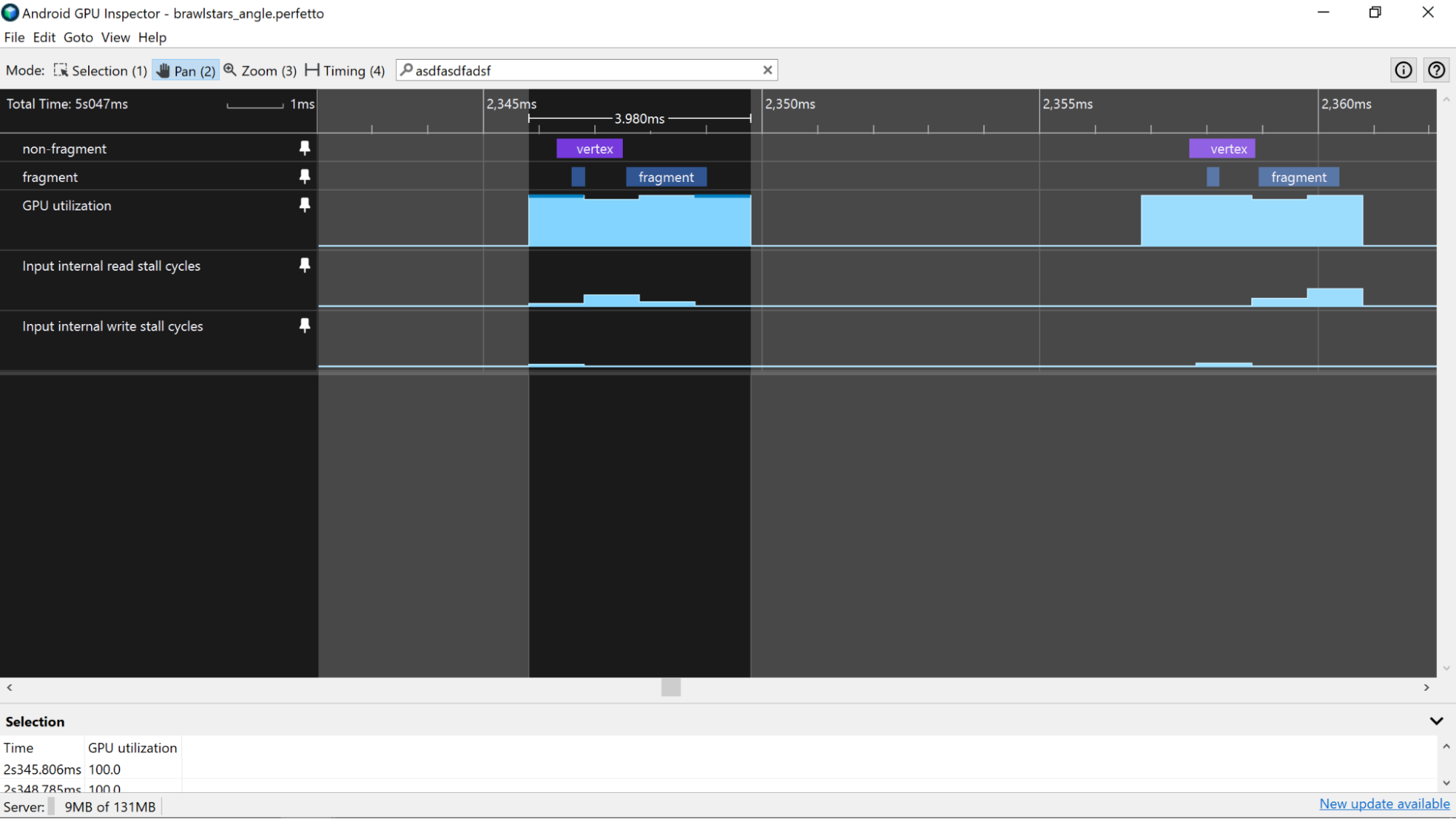
읽기/쓰기 총계
프로파일러에서 단일 프레임을 강조표시했으면 먼저 읽기 합계 (바이트/초) 및 쓰기 총계 (바이트/초) 카운터를 살펴보세요. 이러한 카운터는 단일 프레임 과정에서 메모리 버스를 통과하는 데이터의 양을 전반적으로 잘 보여줍니다. 메모리 대역폭은 휴대기기에서 배터리 소모의 큰 원인이므로 버스를 통해 보내는 데이터의 양을 최소화하세요.
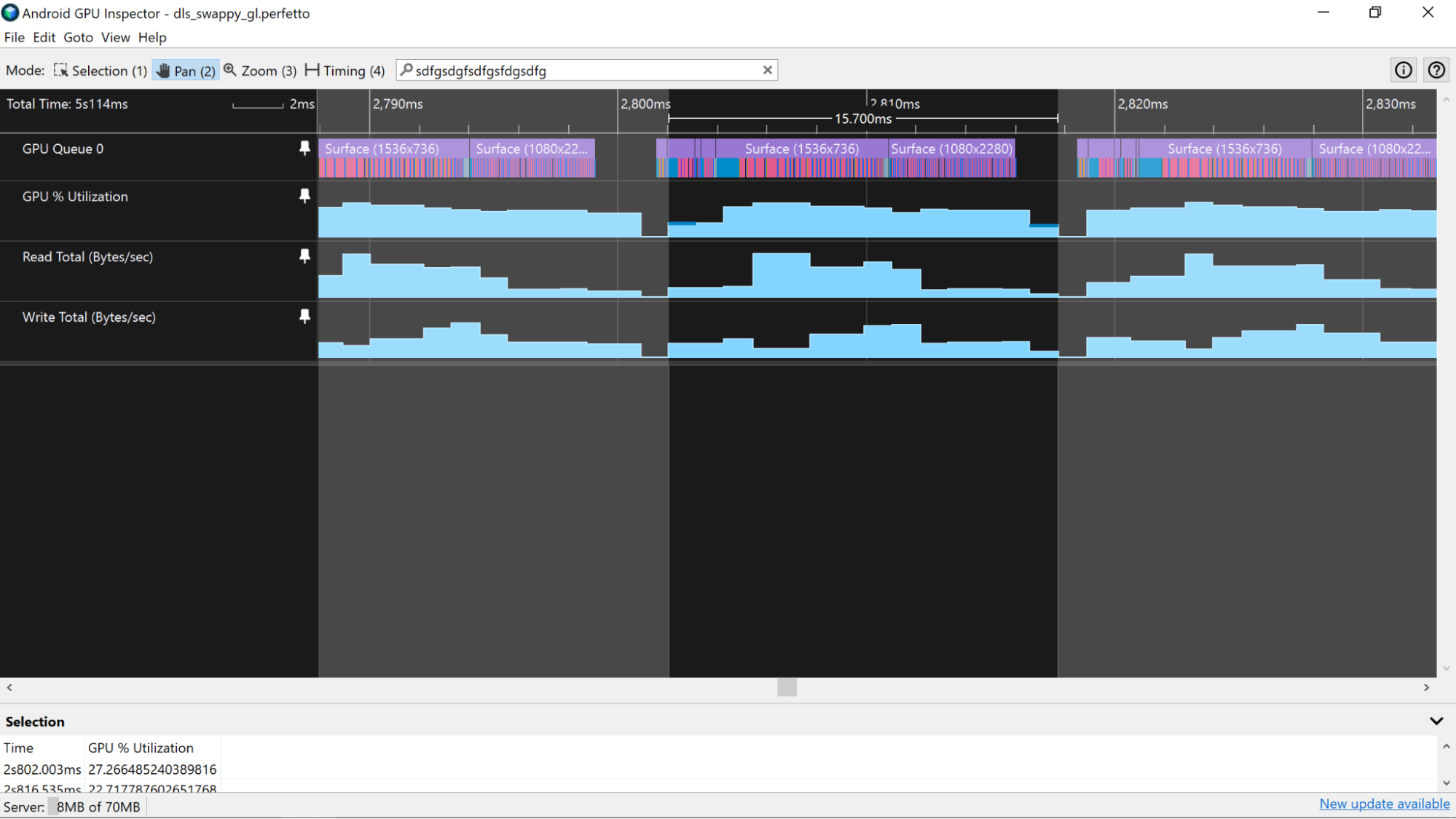
Vertex 메모리 읽기 (바이트/초) 및 텍스처 메모리 읽기 (바이트/초) 카운터를 검사하여 버텍스 및 텍스처 데이터에 사용되는 대역폭 부분을 확인할 수도 있습니다.
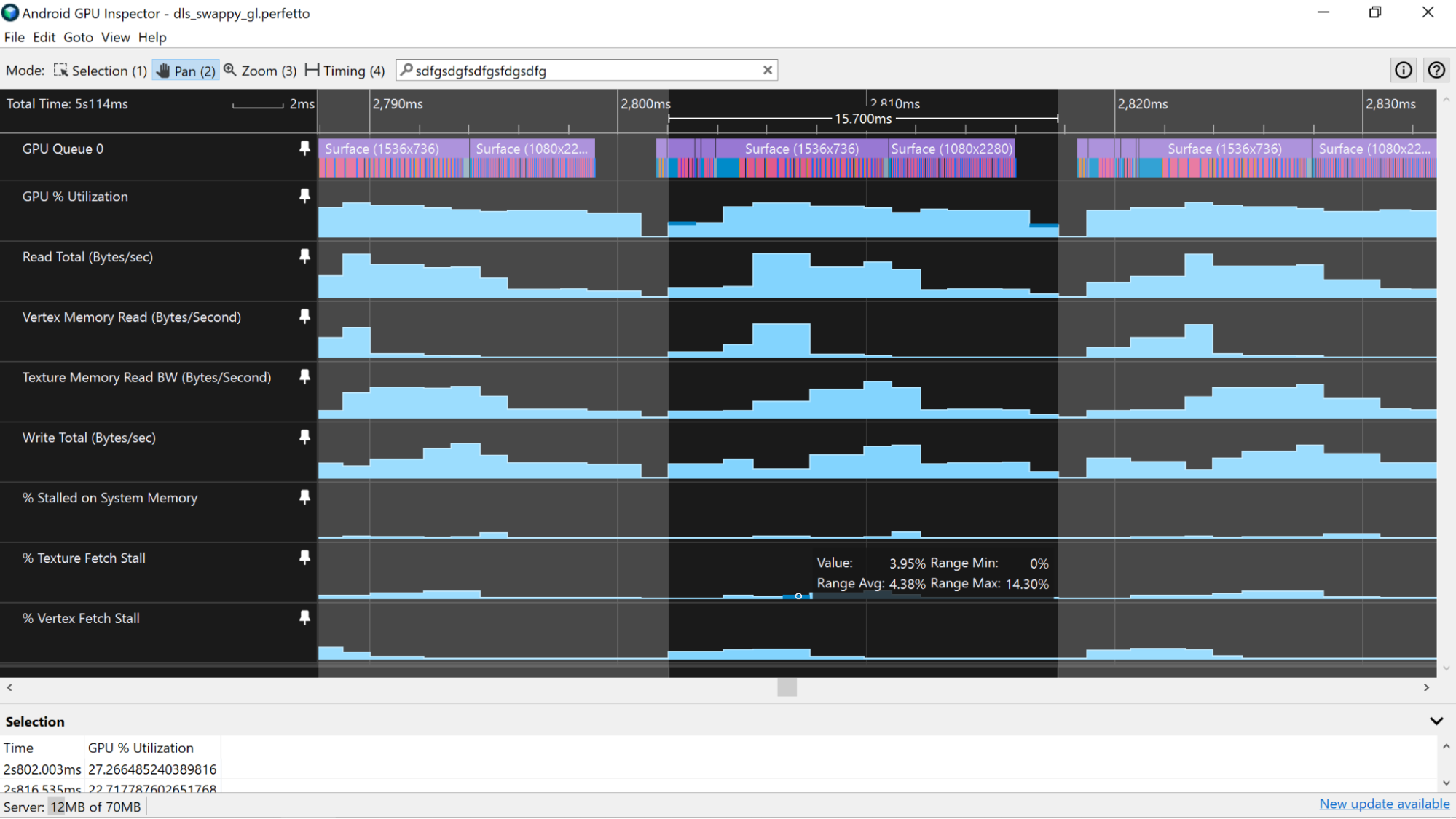
이러한 값에 대해 '양호'한 것은 앱에 표시되는 워크로드 유형에 따라 다릅니다. 예를 들어 2D 애플리케이션에서는 비교적 큰(약 2GB/초)의 텍스처 메모리 읽기 대역폭이 사용될 수 있지만, 버텍스 메모리 대역폭은 매우 미미할 수 있습니다 (~50MB/s). 자세한 내용은 버텍스 메모리 대역폭 분석 및 텍스처 메모리 대역폭 사용량 분석 문서를 참고하세요.
가져오기 스톨
버텍스 가져오기 중단 비율(%), 텍스처 가져오기 중단 비율(%), 시스템 메모리에서 중단 비율(%) 카운터를 살펴보세요. 애플리케이션의 전반적인 메모리 성능에 대한 몇 가지 힌트를 제공합니다. 값이 약 5%보다 크면 앱이 메모리에 데이터를 효율적인 방식으로 배치하지 않았거나 캐시를 활용하기 위해 효율적인 방식으로 데이터에 액세스하고 있음을 나타냅니다. 이러한 유형의 애셋의 메모리 사용량을 개선하는 방법에 관한 자세한 내용은 버텍스 메모리 대역폭 분석 및 텍스처 메모리 대역폭 사용량 분석을 참고하세요.
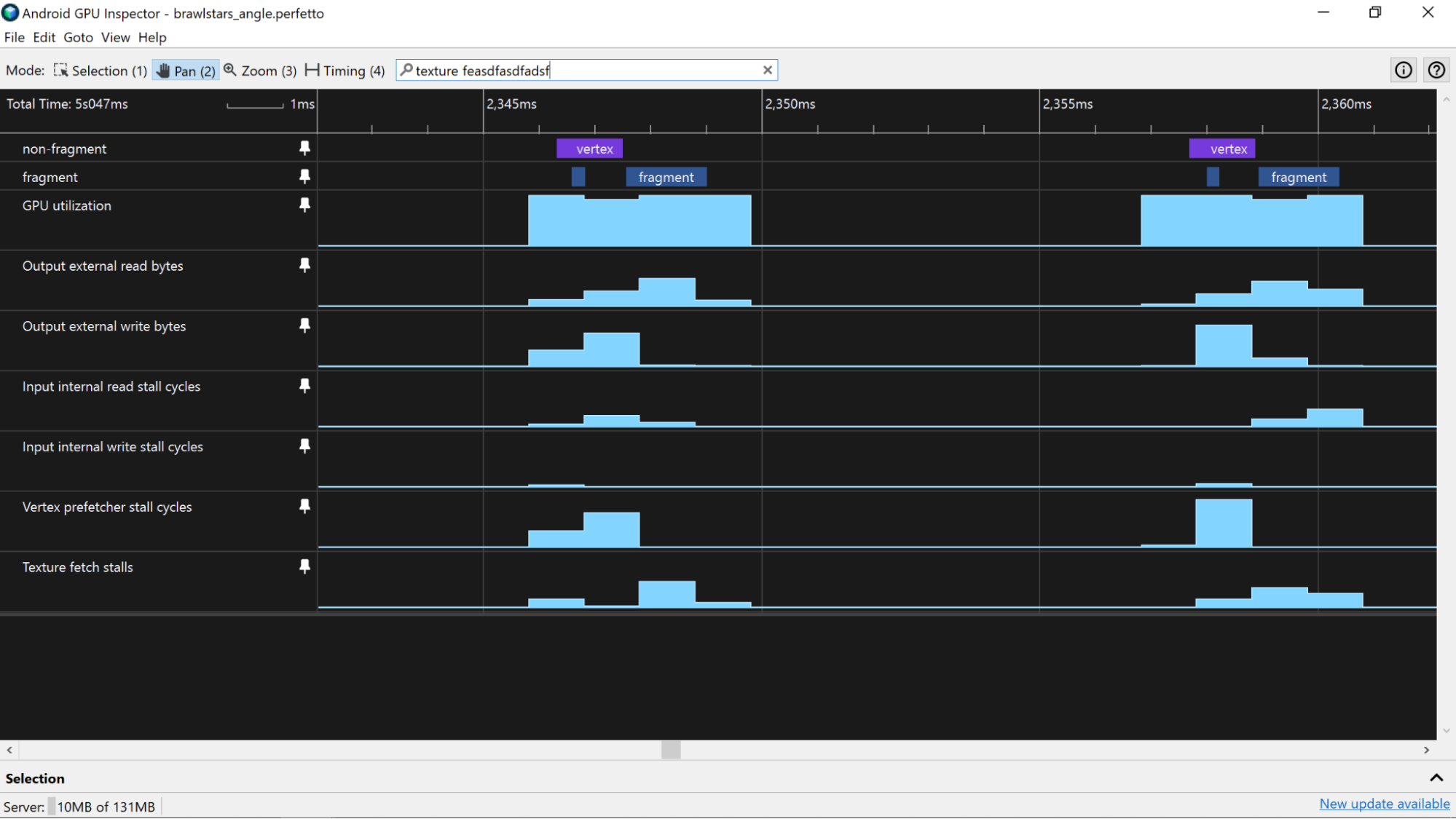
말리 기기
말리 기기에서는 먼저 CPU 및 GPU 프레임 처리 시간 추정에 설명된 대로 단일 GPU 프레임과 일치하는 기간을 강조 표시합니다. 카운터 추적은 모두 동일한 타이밍 기법을 사용하며 (카운터 트랙 데이터와는 별개로 데이터가 수집되는 GPU 슬라이스에서 파생된 프레임 시간 경계를 사용하는 것에 비해) 메모리 사용률을 더 정확하게 예측할 수 있으므로 프레임 시간 경계에 GPU 비율 사용률 또는 이와 유사한 카운터 트랙의 사용과 관련된 이 페이지에 설명된 기법을 사용하세요.
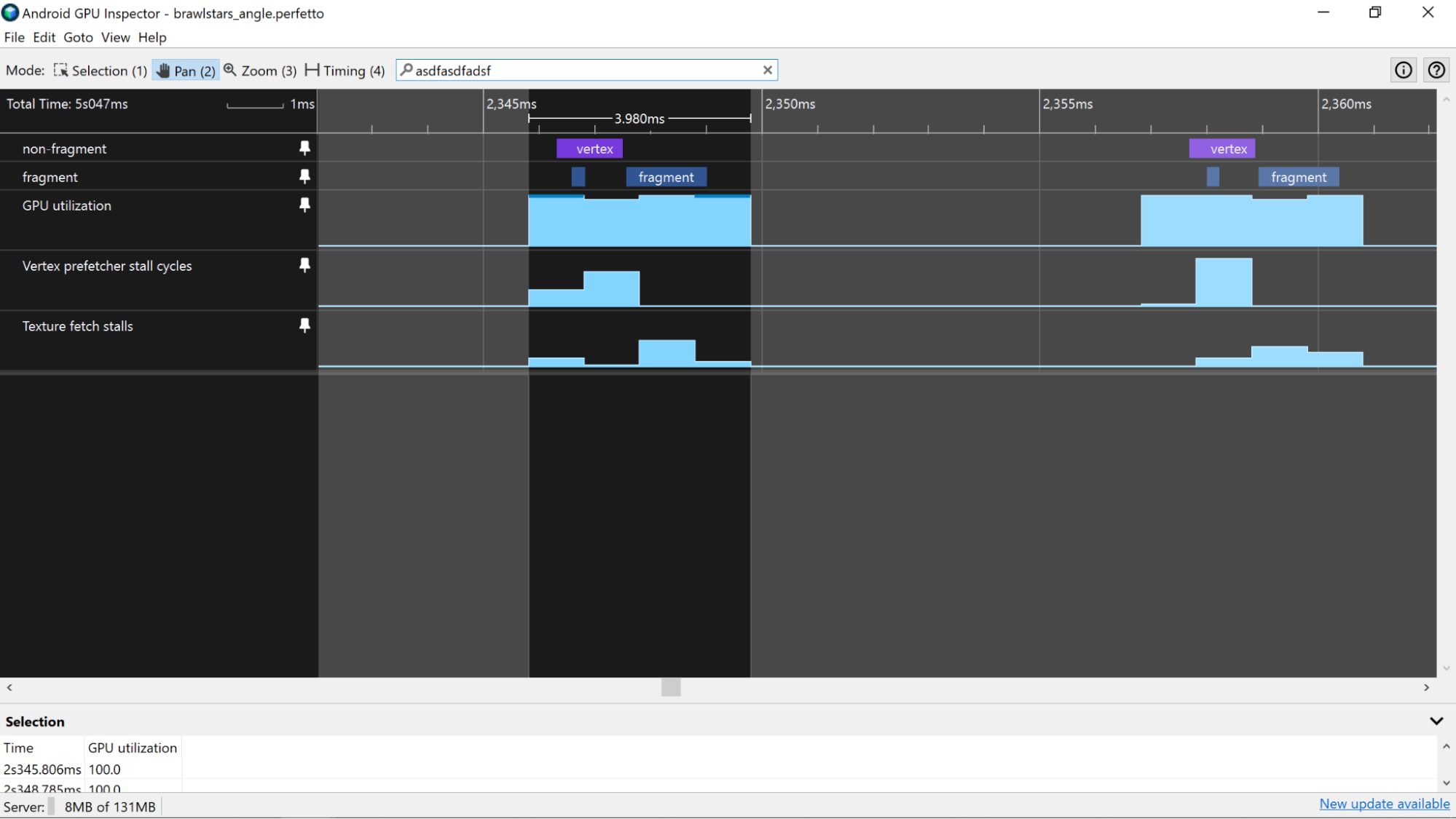
출력 외부 총계
시스템 프로파일러에서 단일 프레임을 강조표시한 후에는 먼저 Output External Read bytes(출력 외부 읽기 바이트) Output External Write bytes(출력 외부 쓰기 바이트) 카운터를 살펴봅니다. 이러한 카운터는 단일 프레임 과정에서 메모리 버스를 통과하는 데이터의 양을 전반적으로 잘 보여줍니다. 메모리 대역폭은 휴대기기의 배터리 소모에 큰 영향을 미치므로 버스를 통해 전송하는 데이터의 양을 최소화하세요.
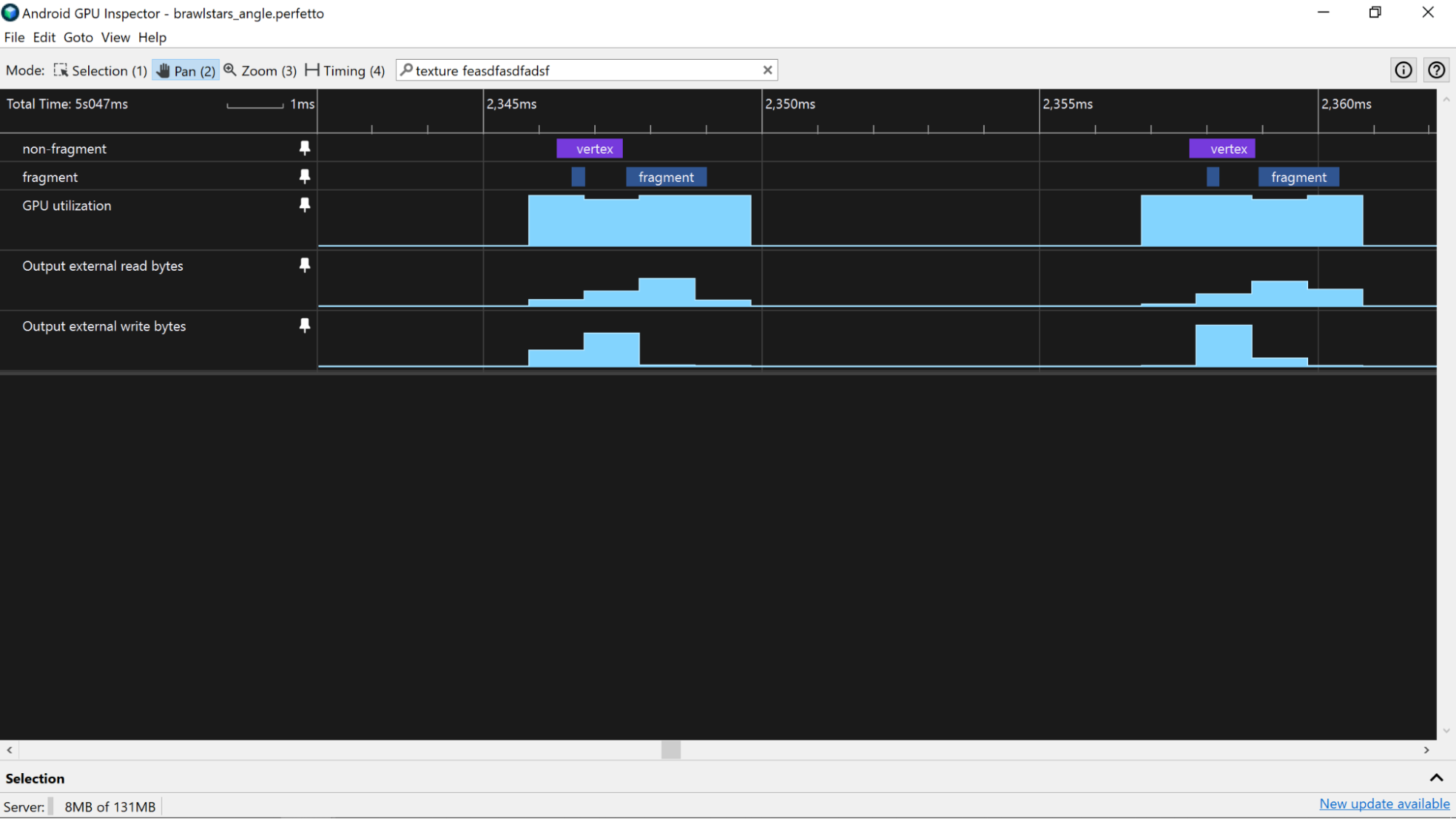
내부 총계 입력
캐시 자체에 대한 정보를 제공하는 카운터도 있습니다. 관심이 있는 카운터는 '내부 [읽기|쓰기] 스톨 주기 입력'입니다. 값이 클수록 캐시에 성공적으로 도달하고 있지만 읽기 요청이 너무 많아서 셰이더 코드가 메모리에 액세스하기 위해 대기하고 있음을 의미합니다.
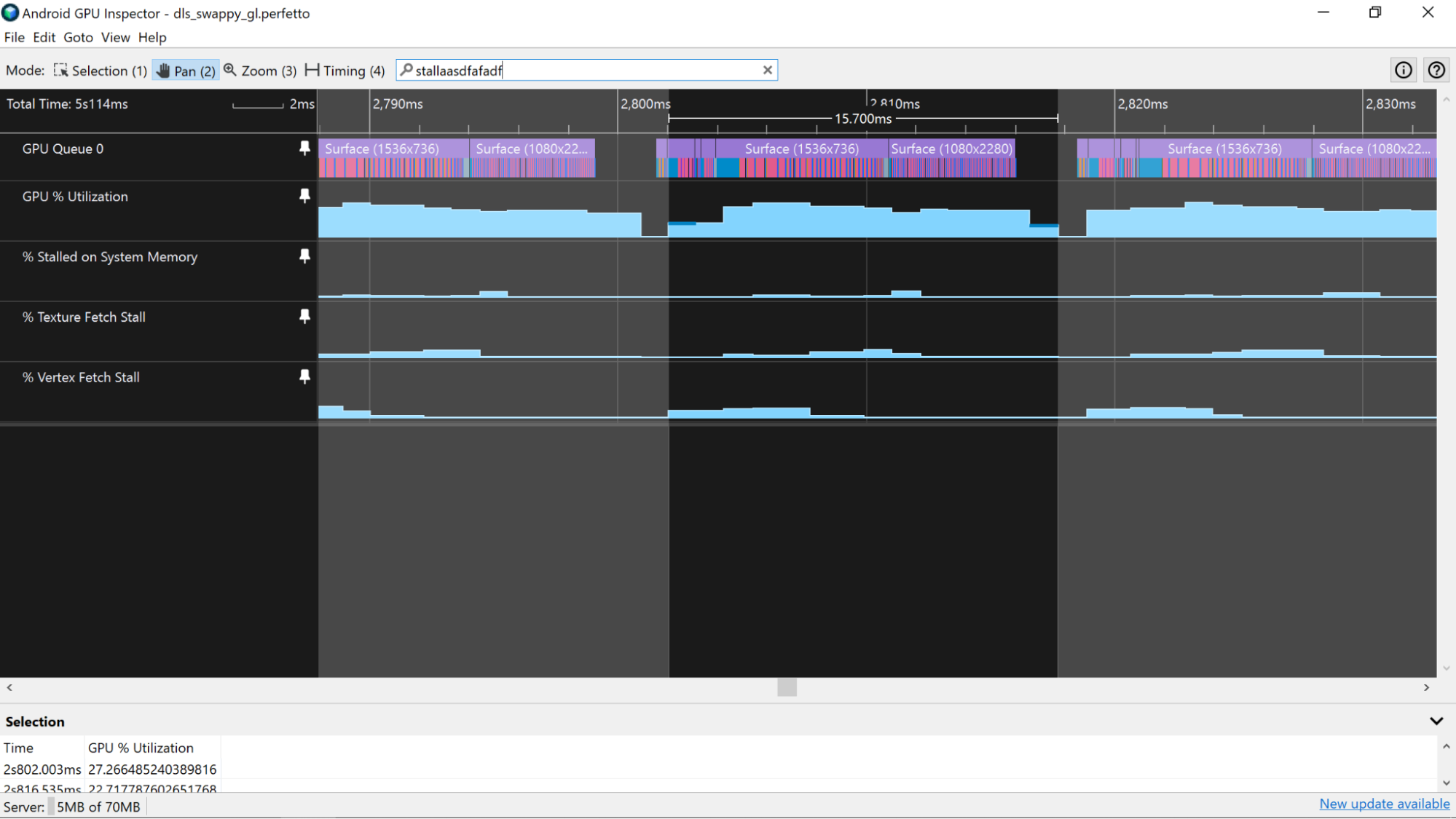
가져오기 스톨
다음으로 살펴볼 수 있는 카운터 세트는 Vertex Prefetcher Stall Cycles 및 Texture Fetch Stall 카운터입니다. 애플리케이션의 전반적인 메모리 성능에 관한 힌트를 제공하기 때문입니다. 5% 보다 큰 값이 표시된다면 데이터를 효율적인 방식으로 메모리에 배치하지 않았거나 캐시를 활용할 수 있는 효율적인 방식으로 데이터에 액세스하고 있음을 의미합니다. 이러한 유형의 애셋의 메모리 사용량을 개선하는 방법에 대한 자세한 내용은 [Vertex|Texture] 메모리 대역폭 분석 문서를 참고하세요.
